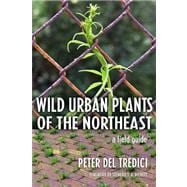
| Foreword | p. xi |
| Preface | p. xiii |
| Acknowledgments | p. xv |
| Introduction | p. 1 |
| Ferns | p. 26 |
| Dryopteridaceae (Woodfern Family) | p. 26 |
| Dennstaedtiaceae (Brackenfern Family) | p. 26 |
| Horsetails | p. 28 |
| Equisetaceae (Horsetail Family) | p. 28 |
| Conifers | p. 30 |
| Taxaceae (Yew Family) | p. 30 |
| Woody Dicots | p. 32 |
| Aceraceae (Maple Family) | p. 32 |
| Anacardiaceae (Cashew Family) | p. 40 |
| Berberidaceae (Barberry Family) | p. 44 |
| Betulaceae (Birch Family) | p. 46 |
| Bignoniaceae (Trumpet Creeper Family) | p. 52 |
| Caprifoliaceae (Honeysuckle Family) | p. 54 |
| Celastraceae (Stafftree Family) | p. 58 |
| Elaeagnaceae (Oleaster Family) | p. 64 |
| Fabaceae = Leguminosae (Pea Family) | p. 66 |
| Fagaceae (Beech Family) | p. 72 |
| Moraceae (Mulberry Family) | p. 76 |
| Rhamnaceae (Buckthorn Family) | p. 78 |
| Rosaceae (Rose Family) | p. 82 |
| Rutaceae (Rue Family) | p. 94 |
| Salicaceae (Willow Family) | p. 96 |
| Scrophulariaceae (Figwort Family) | p. 102 |
| Simaroubaceae (Quassia Family) | p. 104 |
| Solanaceae (Nightshade Family) | p. 106 |
| Ulmaceae (Elm Family) | p. 108 |
| Vitaceae (Grape Family) | p. 112 |
| Herbaceous Dicots | p. 118 |
| Aizoaceae (Carpetweed Family) | p. 118 |
| Amaranthaceae (Amaranth Family) | p. 120 |
| Apiaceae = Umbelliferae (Carrot Family) | p. 122 |
| Asclepiadaceae (Milkweed Family) | p. 124 |
| Asteraceae = Compositae (Aster Family) | p. 128 |
| Balsaminaceae (Touch-me-not Family) | p. 178 |
| Brassicaceae = Cruciferae (Mustard Family) | p. 180 |
| Caryophyllaceae (Pink Family) | p. 190 |
| Chenopodiaceae (Goosefoot Family) | p. 202 |
| Clusiaceae (Mangosteen Family) | p. 204 |
| Convolvulaceae (Morning Glory Family) | p. 206 |
| Cucurbitaceae (Gourd Family) | p. 208 |
| Euphorbiaceae (Spurge Family) | p. 210 |
| Fabaceae = Leguminosae (Pea Family) | p. 216 |
| Lamiaceae = Labiatae (Mint Family) | p. 230 |
| Lythraceae (Loosestrife Family) | p. 238 |
| Malvaceae (Mallow Family) | p. 240 |
| Onagraceae (Evening Primrose Family) | p. 242 |
| Oxalidaceae (Woodsorrel Family) | p. 244 |
| Papaveraceae (Poppy Family) | p. 246 |
| Phytolaccaceae (Pokeweed Family) | p. 248 |
| Plantaginaceae (Plantain Family) | p. 250 |
| Polygonaceae (Smartweed Family) | p. 254 |
| Portulacaceae (Purslane Family) | p. 268 |
| Ranunculaceae (Buttercup Family) | p. 270 |
| Rosaceae (Rose Family) | p. 274 |
| Rubiaceae (Madder Family) | p. 278 |
| Scrophulariaceae (Figwort Family) | p. 280 |
| Solanaceae (Nightshade Family) | p. 286 |
| Cannabaceae (Hemp Family) | p. 288 |
| Urticaceae (Nettle Family) | p. 290 |
| Violaceae (Violet Family) | p. 292 |
| Monocots | p. 294 |
| Commelinaceae (Spiderwort Family) | p. 294 |
| Cyperaceae (Sedge Family) | p. 296 |
| Iridaceae (Iris Family) | p. 298 |
| Juncaceae (Rush Family) | p. 300 |
| Liliaceae (Lily Family) | p. 302 |
| Poaceae = Gramineae (Grass Family) | p. 306 |
| Typhaceae (Cattail Family) | p. 338 |
| Appendices | p. 341 |
| Plants Covered in This Book That Are Included in Dioscorides' De Materia Medica | p. 341 |
| European Plants Listed by Josselyn as Growing Spontaneously in New England in the Seventeenth Century | p. 342 |
| Shade-Tolerance Ratings of the 32 Trees Covered in This Book | p. 343 |
| Species Suitable for a Cosmopolitan Urban Meadow | p. 345 |
| Key Characteristics of Important Plant Families | p. 346 |
| Glossary | p. 349 |
| Bibliography | p. 359 |
| Index | p. 365 |
| Table of Contents provided by Ingram. All Rights Reserved. |
The New copy of this book will include any supplemental materials advertised. Please check the title of the book to determine if it should include any access cards, study guides, lab manuals, CDs, etc.
The Used, Rental and eBook copies of this book are not guaranteed to include any supplemental materials. Typically, only the book itself is included. This is true even if the title states it includes any access cards, study guides, lab manuals, CDs, etc.